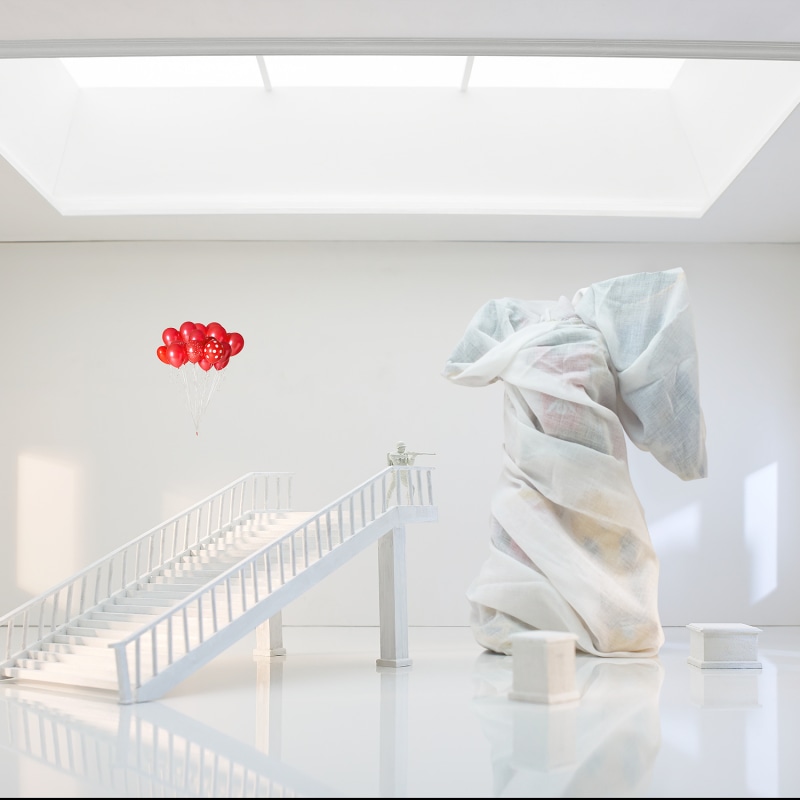It is truly gratifying to have the opportunity to showcase a Korean photographer's exhibition at Beijing's Three Shadows Photography Art Centre, which is considered an important 'hub' of contemporary Chinese art. The question of how best to introduce artist Lim Anna led me to reflect on the 70-year journey of Korean photography. Korean photography, which began with a documentary spirit that recorded life's landscapes, social minorities, and historical scenes, is gradually evolving into art with a more diverse spectrum including staging, conceptual work, and simulation. In this journey toward creating new worlds, Lim Anna shines as a Korean photographer with her own unique metaphors and storytelling.
Lim Anna won the Portfolio Review Award at the Rencontres d'Arles in France in 2019. She is a photographer who has gained significant international attention as an "artist who sharply visualizes the anxieties of contemporary society," receiving recognition for both her artistic merit and message. In fact, since the early 2010s, she has been questioning the 'reality' we believe in through the most dramatic genre of war imagery. The important point in her work is not 'war' itself, but rather her unique 'metaphor' that reflects the artist's sensitivity and the specificity of Korean society.
The title of this exhibition is “Imagination: A Double-Edged Sword”. Born into the post-war generation and living in a peaceful and stable society, indirect anxiety still exists in our 'imagination.' Lim Anna's work draws strong motivation from this psychological experience. From a distance, we see gentle landscapes, but approaching closer reveals traces of anxiety. The expression "double-edged sword" refers precisely to these two faces - the nature of imagination that simultaneously embraces beauty and threat, peace and anxiety. Lim Anna's solo exhibition “Imagination: A Double-Edged Sword” presents endless questions through the power of photography, balancing precariously on the boundary between fact and fiction, documentation and staging.
Her series Frozen Objects is like a fantasy landscape itself. In a pure white space reminiscent of a museum, red balloons float, but ironically at the center are toy weapons and faceless busts of war heroes. Generations who have experienced war through media like films and games discover both fantasy and fear between fact and fiction, with fantasy serving as an outlet for fear. The Romantic Soldiers series follows the same context. In bleached white spaces, colorful foods like candy, cake, and meat are placed alongside tiny toy soldiers. The size and color contrast between objects useless in actual war and the soldiers evokes our psychological numbness, familiar with virtual reality. The Iron Scar series shows various images and symbols inscribed like tattoos on the curves of human bodies. It visualizes how the public accepts framed moments as the entirety of reality when viewing disaster images spread through media, and how the emotional trauma of contradictions and anxieties formed thereby are inscribed like traces on the body and unconscious.
Restructure of Climax, as the title suggests, is work that deconstructs and reconstructs climax. In documentaries and films, we always remember war's climax as dramatic scenes. However, the artist reveals stage devices, lighting, cranes, and backdrops without concealment, showing that such moments might be products of filming apparatus and direction. Simulation of Tragedy documents disaster preparedness training sites conducted by nations and institutions. Real equipment and personnel like actual ambulances and rescue teams are deployed, but situations are designed with fake injured people and their acting. It is, so to speak, society's collective rehearsal. Conversely, Rehearsal of Anxiety is the artist's personal rehearsal. From afar it looks like a disaster scene, but approaching closer reveals lighting equipment and actors in preparation. This work can be called a stage for photographic metafiction—experimenting with how staged scenes invoke real anxiety as if it were actual.
Day after day, our lives encounter events from around the world. However, rather than reading actual political, economic, and social terrain, we rely sensitively on dramatic images created by media. Perhaps we react to consumed images instead of responding to real events. The artist focuses not simply on reproducing disasters, but on how we consume those images. Lim Anna's “Imagination: A Double-Edged Sword” presented at Three Shadows Photography Art Centre condenses photography's power to ultimately pose one question on the boundary between fact and fiction, documentation and staging: "How much of the reality we believe is truth, and from where does it become fabricated?" This question addresses not only Korea but all of us living in unstable times. When you leave the exhibition hall, I hope you will recall this question in all the images you encounter around you. At that very moment, photography will become not merely an image, but the beginning of another way of thinking.
Text / Seok Jaehyun
